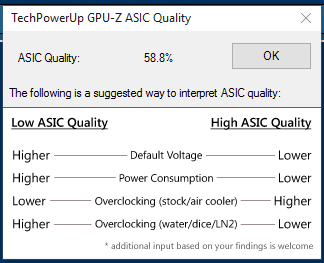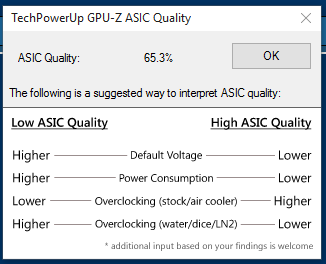I've been monitoring my Titan X with GPU-Z and just found the ASIC Quality menu option. Mine comes up as 62.3%, which per the second link below is rather low.
I've read pages like
http://linustechtips.com/main/topic/27079-what-is-asic-quality/
and
https://forums.geforce.com/default/...what-is-gpu-asic-quality-amp-how-to-read-it-/
which indicate that I'm going to see increased power consumption and thus slightly lower performance and significantly reduced overclocking ability, but I'm not going to overclock the card (because I don't want noise), so should I be concerned?
Beyond that, what else do I need to know about ASIC quality?
I've read pages like
http://linustechtips.com/main/topic/27079-what-is-asic-quality/
and
https://forums.geforce.com/default/...what-is-gpu-asic-quality-amp-how-to-read-it-/
which indicate that I'm going to see increased power consumption and thus slightly lower performance and significantly reduced overclocking ability, but I'm not going to overclock the card (because I don't want noise), so should I be concerned?
Beyond that, what else do I need to know about ASIC quality?




